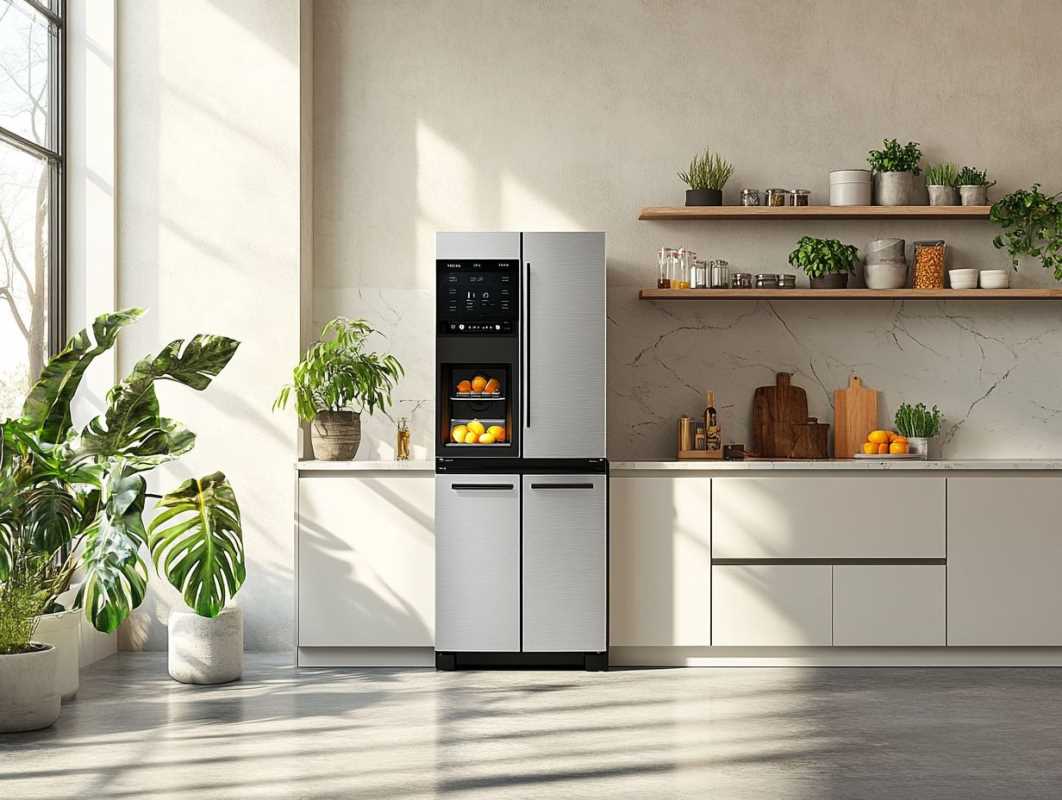A well-organized kitchen saves time and reduces stress. Overall, it just makes meal prep a smoother process for busy people. It can seem like a lot at first, but organizing isn’t about alphabetizing spices or buying trendy containers. It’s about creating systems that work for your space. With clever planning, a bit of creativity, and some tweaks to existing habits, you’ll transform your kitchen into a functional, stress-free zone. This guide will show you how to set up your kitchen for maximum efficiency, whether you're a parent with a busy family or if you live by yourself and need something easy to use without a ton of clutter.
1. Start by Streamlining Your Tools
Sorting through an overflowing utensil drawer doesn’t make cooking easier. Prioritize tools you actually use and donate or store the rest. Think of your kitchen like a toolbox. It should only hold items that serve a purpose. Can an immersion blender replace multiple appliances? Multi-purpose gadgets or tools save space and reduce clutter. Instead of keeping duplicates or items you seldom touch, focus on the essentials and keep them within reach.
Organizing tools by their function helps too. Keep baking tools together in one drawer and items for sautéing or grilling in another. This reduces the time spent hunting for that one whisk or favorite spatula during a busy weeknight dinner rush.
2. Create Zones to Simplify Workflow
Instead of storing items randomly, think about your kitchen in zones. Group all items by task or usage. The coffee-making zone might include your coffee maker, mugs, sugar, and filters all stored together. The prep zone could hold cutting boards, knives, and mixing bowls close to the countertop where most chopping happens.
Try storing pots and pans close to the stove and plates near the dishwasher to streamline unloading. Breaking your kitchen into intentional zones not only saves time but also keeps everything where it’s most needed. This system minimizes steps and makes it easier for every family member, even kids, to pitch in when meal prepping or cleaning up.
3. Utilize Vertical Space
Cabinets and counters often create wasted vertical space. Look up and think tall. Install adjustable shelving inside cabinets to make room for short but frequently used items like mugs or glasses. Use hooks on an empty wall to hang items like measuring cups, oven mitts, or even small pots and pans. Magnetic knife strips and spice racks can free up counter space while keeping must-haves accessible.
Another great option is stackable bins for pantry items. Storing snacks, pasta, or baking supplies in clear, labeled containers makes it easy to grab what you need and see what’s running low. Peg boards, often hung in garages, can also double as a creative storage solution for utensils, measuring spoons, or even your Instant Pot lid.
4. Rotate Seasonal Items
Stowing away holiday-themed cookie cutters or a slow cooker during peak grilling months keeps your kitchen manageable year-round. Seasonal rotation makes a huge difference, particularly in smaller kitchens. Store less frequently used appliances out of sight and swap them back in as cooking habits change with the seasons. Large soup pots, turkey roasting pans, or summer-themed lemon presses don’t need premium countertop space every day.
Plastic bins or labeled storage containers are perfect for keeping seasonal items safely tucked away in a pantry or a closet until they're needed again. This clears the way for the things you’ll use regularly while keeping your kitchen fresh and accessible.
5. Label Everything for Visibility
Opening the pantry to find chaos makes meal prep frustrating. Labels simplify this problem by showing you exactly what’s inside every container at a glance. Clear bins or jars combined with bold, easy-to-read labels reduce confusion. Go beyond generic tags like "snacks" or "spices" and be specific. Use “flour (all-purpose)” or “gluten-free crackers” to avoid mistakes.
Labeling isn’t just for food. Apply it to cabinet shelves, inside drawers, and even the fridge. Assign labels like “lunchboxes” or “reusable water bottles” to create a drop zone for items that often go missing. With everything easy to identify, family members won’t rack their brains trying to locate food or supplies mid-mealtime.
6. Revamp the Refrigerator
Refrigerators often become chaotic pits of forgotten leftovers and mystery sauces. Avoid this by organizing the fridge by category. Dedicate sections for snacks, meal prep, or leftovers. Clear storage bins designed for fridges can keep condiments upright while containing spills. Keep commonly grabbed items like milk, eggs, and yogurt closer to eye level for easy access.
Use the fridge doors for smaller items, such as salad dressings or juice cartons. Lazy Susans are another hidden gem for organizing the fridge. They spin, allowing easy access to hard-to-reach corners. Weekly “fridge resets” are a time when you eliminate old food and recheck inventory. This will keeps your refrigerator neat and functional.
7. Make Use of Cabinet Doors
Cabinet doors are a hidden storage goldmine. Hanging organizers, adhesive hooks, or magnetic strips can transform the inside of a cabinet door. Use one for pot lids, cooking utensils, or even trash bags. Another idea is to install slim racks inside pantry doors to store spices or canned goods.
Adding small, labeled baskets inside cabinet doors keeps everything neat and contained. You might also attach a cleaning chart, grocery list, or measurement conversion chart to the inside of a door for quick reference.
8. Establish Weekly Maintenance Habits
Even a perfectly organized kitchen can spiral into chaos without maintenance. Dedicate 15 minutes weekly to reorganizing problem spots. Use this time to throw out expired food, remove crumbs from drawers, or wipe down counters. Consistent upkeep eliminates the need for massive overhauls down the line.
Encourage family members to chip in by assigning everyone a role. Kids can clean out the fridge while adults tackle pantry reorganization. Making this a routine ensures your kitchen remains a stress-free zone for everyone.
9. Rethink Your Grocery Organization
Bringing groceries into a messy kitchen slows everything down. Avoid this issue by pre-organizing your groceries before shelving them. Unpack food into zones matching your storage system. Stack cereal boxes based on size or store canned goods with similar items for cohesion.
Keeping a running inventory list also makes a big difference. Sync this list with your grocery trips so you restock only what you need, avoiding duplicates or overfilling shelves. Organized groceries make for easier meal prep and less time wasted searching during busy weekday mornings.
10. Go Digital with Menus and Meal Planning
Calendars, apps, and digital organizers can make a huge difference in a busy family kitchen. Apps like Cozi or Plan to Eat offer tools for meal planning, shopping list organization, and schedule syncing. Use technology to match meals to your pantry’s current contents and cut down on food waste.
Digital boards like the Samsung Family Hub refrigerator integrate technology right into the kitchen. These smart tools allow everyone in the family to stay connected, organized, and aware of weekly meals, making efficiency a family affair.







